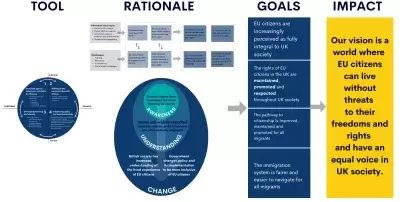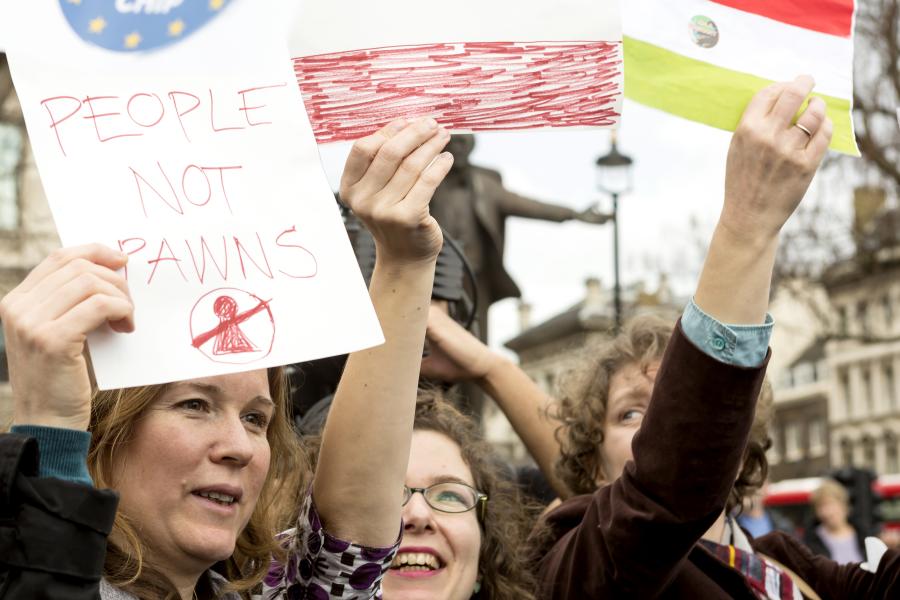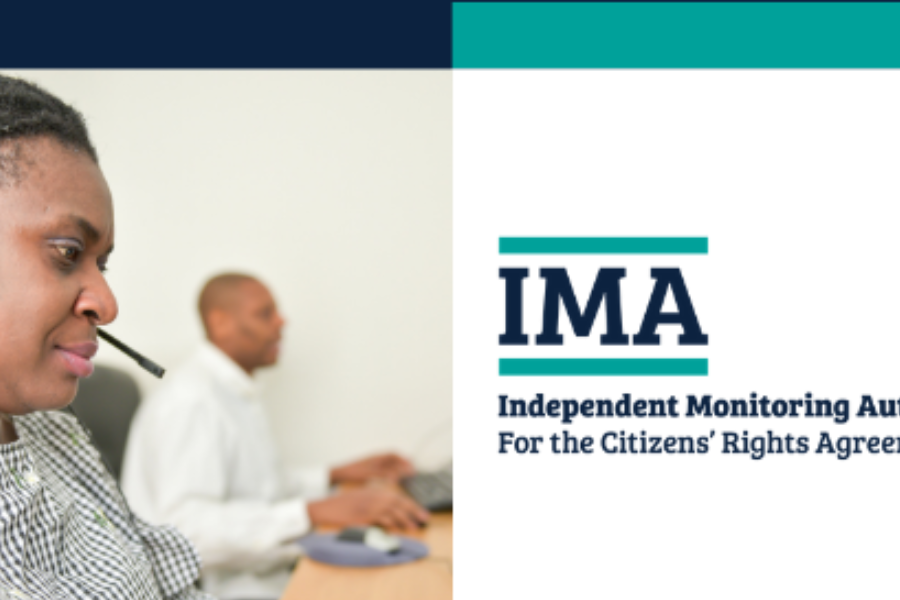Our theory of change
Our vision is a world where EU citizens thrive, fully exercise their rights and enjoy an equal voice in UK society.
Our theory of change articulates our role in achieving this vision and our view of how our work fits in the wider migration sector. This has helped us to cement our values but also develop a framework to work within when developing and implementing our work.
This forms, in large, part of our funding from the Paul Hamlyn Foundation to whom we are grateful for their ongoing support of our work and have been the inspiration for the development of key parts of this document.
Our long-term goals
- EU citizens are increasingly perceived as fully integral to UK society
- The rights of EU citizens in the UK are maintained, promoted and respected throughout UK society
- The immigration system is fairer and easier to navigate for all migrants
- Active participation and integration are supported and promoted for all migrants
Our contribution and approach to achieving our long-term goals
EU citizens in the UK now live within the confounds of the UK immigration system and the associated hostilities towards migration and in other areas of policy such as housing, welfare, work and so forth. For our vision to be achieved, there needs to be significant change to the ‘immigration system’.
When discussing the immigration system it is important to acknowledge that it steps beyond the domain of border officers and decision making on visas. It features across Government departments, in the political narrative and public discourse.
We have mapped our view of the immigration system based on four main domains:
- Policy, legislation and culture of key institutions
- Public, media and political narratives about migration
- Developing learning and sharing
- Degree of influence and agency people have to influence the immigration system
These main domains have been influenced by Sheila McKechnie Foundation’s Social Change Grid and Paul Hamlyn Foundation’s Theory of Change.
We have broken down our Theory of Change to achieve our aims into the tools we use, our activities, and the methodology for how we use them, our rationale.
Activities
We have mapped our activities on the following framework, which shows how different parts of what we do interlink. We recognise that our specific role in the sector is more significant in some quadrants than in others.
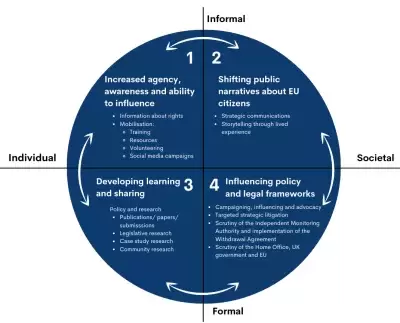
Rationale
Placing our activities into context and understanding how they will take us to achieving short to medium to long term goals forms the next part of our Theory of Change. The theory sees two sets of rationale to deliver on our vision.
The first, our framework for understanding what our goals look like in reality: what are the changes we need to see? Our activities can’t exist in isolation and the actions taken need to reflect the ambitions of our ‘Change Framework’:
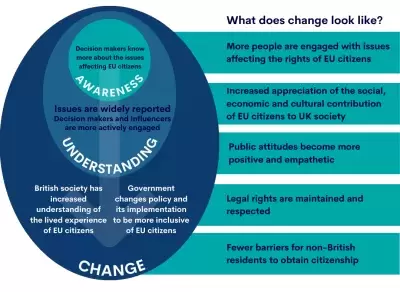
The above part of our Theory of Change reflects how we monitor outcomes of our activities.
For the short and medium term, we aim to use our activities to develop awareness that leads to understanding and then change around the experience and rights of EU citizens. In parallel with this progression we need to have our activities focused on ultimately achieving what the change needs to look like.
Do our activities build awareness, understanding and deliver change?
Do our activities deliver on the answers to ‘what does change look like’?
In addition to this Change Framework, certain objectives need their own part in the Theory of Change. We have developed a more traditional model of progression when considering the ‘increased agency, awareness and ability to influence’ part of our activities.
Information Provision and Mobilisation work in partnership in this part of our activities. They feed into our other activities but monitoring their effectiveness to achieving our long term goals and vision require specific consideration.
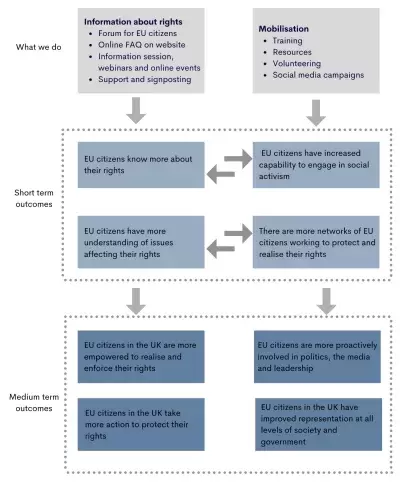
Bringing the Theory of Change together
When we bring together the above processes they form our current Theory of Change. To assist we have placed them within a single diagram to illustrate the process in our thinking.
